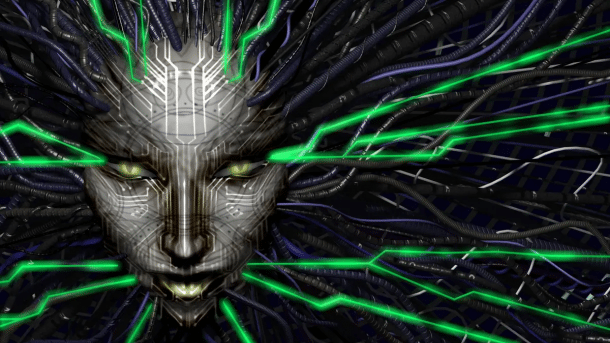25 years of "System Shock 2": Look at you, hacker!
Exactly 25 years ago, a computer game was released that completely redefined the meaning of the word "atmosphere": "System Shock 2".

"System Shock 2" went on sale on August 11, 1999.
(Image: Irrational Games)
"Look at you, hacker. A pathetic creature of meat and bone, panting and sweating as you run through my corridors. How can you challenge a perfect, immortal machine?" There are few sentences in the world of computer and video games that are more iconic than this one. All the cold contempt of an arrogant, hyper-intelligent AI towards an inferior species like humans, summed up in 28 perfectly chosen words. Sensational!
This was not only my ringtone for many years, but also the phrase that Shodan ("Sentient Hyper-Optimized Data Access Network") hurled at you in the installation program of 1994's "System Shock". A classic, developed by Looking Glass Studios and distributed by Origin Systems, which fused core elements of first-person shooters and role-playing games into an irresistible mix, earning one dream score after another.
A few months after the initial release, an update followed in the form of the CD version, which not only offered SVGA graphics (i.e. a resolution of 640x480 pixels with 256 colors), but above all also continuous English voice output - which was such an excellent atmospheric bonus that the magazines added a few more points in the night tests. Or to put it another way: "System Shock" set the bar for the "thinking man's shooter" genre pretty damn high. Not the easiest of conditions for the young, inexperienced team tasked with developing the sequel.
Remember Citadel!
Irrational Games was founded in 1997 by the three former Looking Glass employees Ken Levine, Jonathan Chey and Robert Fermier. These three had, and this seems to be the origin of the name, the irrational idea of developing a game that would not only be loved by critics, but would also sell well - unlike most Looking Glass games.
The original idea was called "Junction Point" and was largely based on Joseph Conrad's literary classic "Heart of Darkness" from 1899: a military commander has gone mad and the player has the task of finding and killing him. With this pitch, they approached several publishers, including Electronic Arts. This company owned the rights to the "System Shock" series and suggested that the three of them simply turn their proposal into an official sequel.
Basically a wonderful idea, the only problem was that of the three founders, only Jonathan Chey had a finished game in the stores - the other two were still very green behind the ears. And then such a mammoth project? The small team couldn't manage it alone.
Working in the dark
The solution to the problem was that Irrational Games would work on "System Shock 2" with the company they had only recently turned their backs on: Looking Glass Studios. Not only did they have experience with the original game, but they were also working flat out on the graphics system for their sneak shooter "Thief: The Dark Project" (released at the end of 1998, called "Dark Project: The Master Thief"), which Irrational Games was to use for "System Shock 2": the "Dark Engine".
According to a post-mortem by lead programmer Jonathan Chey, the fact that the engine was still in the middle of development at the start of work on "System Shock 2" had both advantages and disadvantages. The biggest disadvantage was, of course, that the team could never rely on everything working the way they wanted it to. Features changed from one day to the next. Things that worked yesterday suddenly crashed the game today.
At the same time, the biggest advantage was that Irrational Games was not only able to influence the general structure of the graphics system thanks to the close collaboration with Looking Glass, but also had the opportunity to develop customized extensions for the game itself and integrate them into the engine.